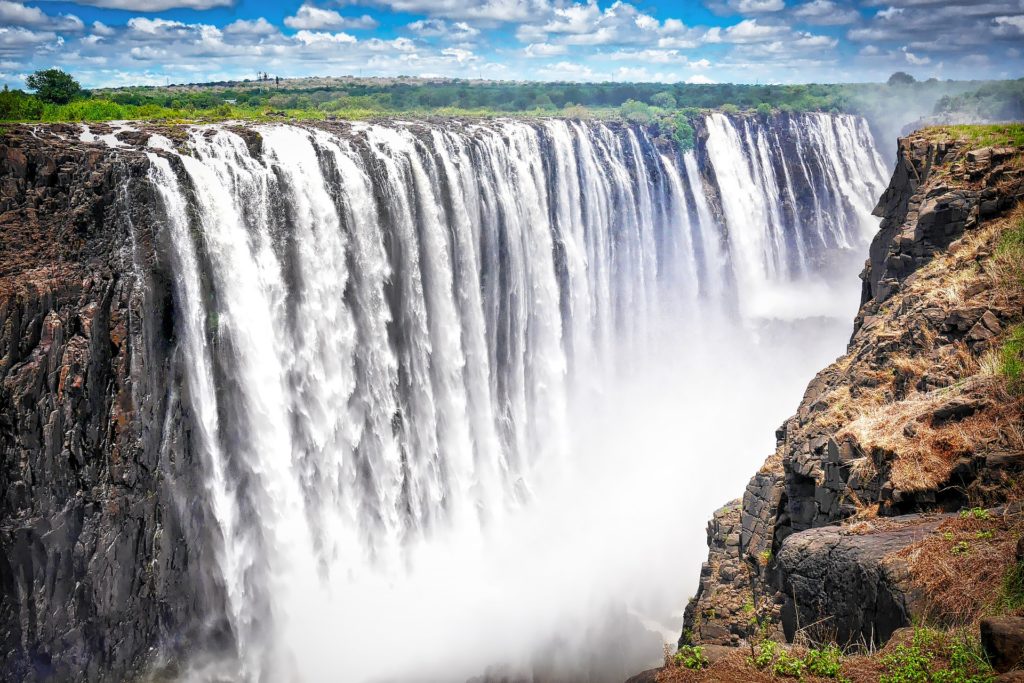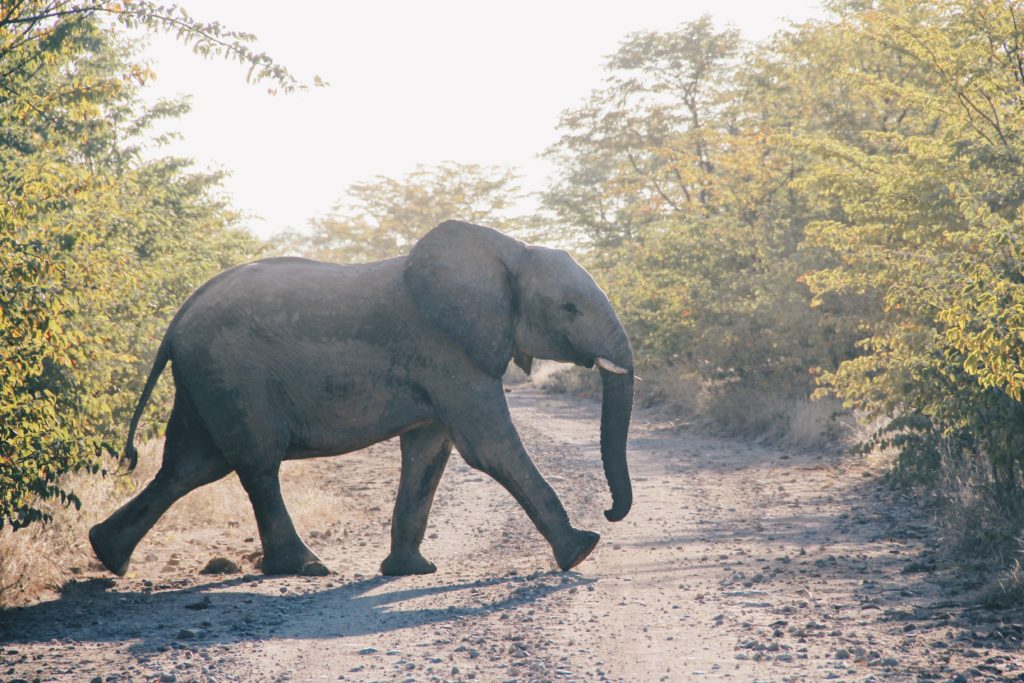
Zimbabwe’s ambitious tourism plans aim to welcome more visitors to this iconic safari destination while also creating a sustainable future for its stunning wildlife, fascinating heritage sites, talented hospitality workforce and the wider nation.
A recent report produced by conservation organisation Space for Giants and the UN Environment Programme (UNEP), the leading global voice on the environment, has highlighted how Africa has yet to unleash full potential of its nature-based tourism. The southern African nation of Zimbabwe, however, is one of the visionary countries determined to change the face of tourism on the continent.
According to the report: “Africa’s unique diversity of wildlife and habitat has the potential to radically transform the continent’s economy.” The report, however, states only four African nations (Kenya, Rwanda, South Africa and Zimbabwe) are leading nature tourism destinations, each attracting between 2–5 million visitors a year. Oliver Poole, Executive Director of Space for Giants, said the organisation “strongly believed” the right type of nature-based tourism undertaken in a sustainable way can be a powerful conservation tool.

Zimbabwe, a country that has 13% of its land (in excess of 5 million hectares) comprising protected areas designated for wildlife and natural habitats, is one of the nations focused on scaling up its sustainable tourism potential. Research published in 2018 by Zhou Zibanai of Midlands State University in Zimbabwe, show that the tourism sector contributes over $500 million into the national economy and supports in excess of 200 000 employees directly.
The Ministry of Tourism and Hospitality Industry has ambitious targets to increase tourist arrivals and produce significant amounts of foreign exchange for the economy. Central to this tourism ambition is conservation and this was recognised in June 2019 at The Wildlife Economy Summit in Zimbabwe organised by the UNEP and African Union. Doreen Robinson, UNEP’s Chief of Wildlife, told SCF blog, “We held the Summit in Victoria Falls in the heart of the Kavango Zambezi Transfrontier Conservation Area, an ambitious 5-country transboundary initiative that the UNEP is involved in supporting to advance viable corridors where wildlife and people can coexist and thrive.” The conservation area, the size of German and Austria combined, is working to sustainably manage diverse ecosystems, heritage and cultural resources. It embraces the Okavango and Zambezi river basin regions of Angola, Botswana, Namibia, Zambia and Zimbabwe.

protected indigenous forests, woodlands, bush land
and wooded grasslands.
Some 12 African ministerial delegations joined representatives from around 30 countries for the Summit. It was appropriate to see such a key summit convene in a nation that has taken decisive steps to protect their natural habitats that are central to tourism yet face constant challenges. Ms Robinson also told SCF Blog: “Zimbabwe offered an opportunity to showcase the contribution and lessons learned associated with nature-based tourism.”
Zimbabwe’s safari experts have also been joining the effort to create sustainable economic and ecological benefits for both Zimbabwe’s people and the environment. International tourism industry bodies are increasingly recognising their work. The African Resilience Summit, part of a major tourism industry forum held this year (2019) in South Africa, presented an award to African Bush Camps Foundation for its innovative efforts to change how safari companies sell their tours and work with communities in Zimbabwe. Projects range from funding practical, fun eco-education in primary schools to providing hospitality and catering internships within the safari industry.
The forward thinking shown by such companies in Zimbabwe’s tourism industry, together with state and third sector efforts to create a sustainable tourism future for the nation, has seen promising results in terms of poaching prevention and the flourishing biodiversity within nature reserves. The nation’s elephant population is now rising after it fell by 36% between 2001 and 2014 when areas like the Lower Zambezi were heavily penetrated by poachers.

Preserving the natural and cultural treasures of Zimbabwe has raised its tourism profile and reputation. The country was rated as being in the top three global tourism destinations for 2019 by the renowned travel publisher Lonely Planet. “Zimbabwe has always been a country that travellers on the ground have raved about,” reported the respected travel guide organisation, “Not only is it one of Africa’s safest destinations, its one blessed with ultra-friendly locals, ‘Big Five’-filled national parks, World Heritage-listed archaeological ruins, forested mountains and the mighty Vic Falls.”
Airlines are also recognising the new impetus given to tourism with Rwandair, Africa’s fastest growing carrier, launching flights from the UK to Harare in April 2017. This route is part of Rwandair’s ongoing plan to offer new and seamless connections between more African cities and beyond the continent.
Wildlife is the single biggest revenue for Africa’s tourism, with the United Nations World Tourism Organization reporting that 80 per cent of annual trips to the continent were made to see wildlife. Zimbabwe aims to mobilise even more interest in its natural and cultural treasures at the country’s annual Sanganai/Hlanganani travel expo (12-14 September 2019) that is expected to attract participants from 20 countries. The gathering will be held in Bulaweyo, the nearest large city to Hwange National Park (the country’s largest game reserve), Matobo National Park (a UNESCO World Heritage Site) and Victoria Falls (one of the seven Natural Wonders of the World).
Beyond the major attractions, however, there is a vast array of historic sites, scenic highlands, tea estates, intriguing rock formations, scenic lakes and diverse game parks just waiting to offer tourists an array of unique experiences combined with genuine hospitality. Many tourists from within and beyond the continent may not always be familiar with these attractions but anyone ready to discover the treasures of Zimbabwe will be richly rewarded.
Swahili Coast Foodie hopes to bring you more about this exciting destination in future posts. Visit www.zimbabwetourism.net to find out more about Zimbabwe.
For more details on the Sanganai / Hlanganani Travel and Tourism Fair contact: Felicia Munjaidi at ztalon@outlook.com or call 07930454099
Rwandair fly three times a week from London Gatwick to Harare via Kigali.
Top image: The world-famous Victoria Falls is surrounded by dense woodland vegetation that is nourished by the constant spray from the falls.
Special thanks to Keishamaza Rukikaire (UNEP) for her assistance in preparing this post.











